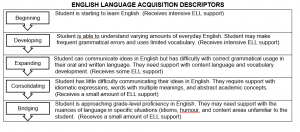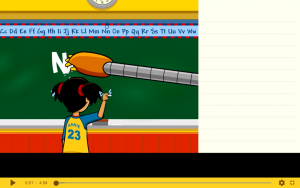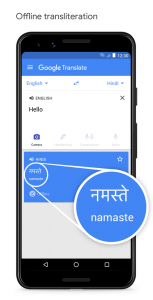We’re all at home for a while. There are so many things to keep us busy on the computer and in the toy box. But don’t forget that if English is not your first language, it’s important to practice speaking and listening! Here are some games you can play at home with family or in calls or chats with classmates or friends.
LOW AND NO PREP FAMILY GAMES
1. TWENTY QUESTIONS
Number of Players: 2 or more
Materials: none
How To Play: Player 1 thinks of a person, place or thing. Other players take turns asking yes or no questions. That means the answer can only be “yes” or “no”. After each question, the asker can make one guess about what the word is. If they don’t guess it after 20 questions, they lose.
2. ALPHABET CATEGORIES – My family played this game on long car trips, but you can play it anywhere! Try playing on the phone or on a video call with friends.
Materials: none
Number of Players: 2 or more
How to Play: Choose a category such as foods, animals, or ocean things. The first player says a word in the category beginning with the letter A. The next player says a word in the category beginning with B. When a player cannot think of a word, he or she has lost the game. Stop the game and try another category. If you lose, you get to go first next time!
Another Way to Play: To make it easier for young children, play CATEGORIES without the alphabet. Just pick a category and take turns naming things in the category!
3. I SPY
Materials: none
Number of Players: 2 or more
How to Play:
Player 1 looks around the room and spots something that is one colour.
Player 1 says “I spy with my little eye, something that is _____________.”
Player 2 tries to guess the item. Player 2 says “Is it the _______________?”
If Player 2 is correct, he or she takes a turn.
If Player 2 cannot think of any more things, he or she says “I give up!” and Player 1 takes another turn.
Hint: Be fair. Don’t choose something impossible to guess.
4. I’M GOING ON A CAMPING TRIP
Materials: none
Number of Players: 3 or more
How to Play: Player 1 thinks of a category (a category is a group with something in common). There are some examples below. Other players take turns saying “I’m bringing __________.” If the item fits the category, Player 1 says “You can come”. If it doesn’t fit the category, Player 1 says “You can’t come”. Players continue until a player is able to guess the category.
Some categories for younger players: Halloween things, things that start with ‘b’, things at the playground, clothing, fruits…
Some categories for older players: things that are always cold, things you can build with, things you take on a trip…
5. LAST LETTER FIRST
Materials: none
Number of Players: 2 or more
How to Play: Player 1 says any word. Player 2 says a word that begins with the last letter of the word. The game continues with each player saying a word that begins with the last letter of the last word.
Another Way to Play: You can play this game in writing. Use a pencil to write a word. The next player writes a word below it that begins with the last letter.
6. PIE PLATE (this is a more friendly way to play Hangman)
Materials: paper and something to write with
Number of Players: 2 or more
How to Play: Player 1 draws a pie, or circle, with 8 slices. Player 1 thinks of a secret word. Below the pie, he or she writes a short line for each letter in the word. (ask an adult to help you check your spelling) Other players take turns guessing letters in the word. If a letter is correct, Player 1 writes it in the correct space. If the letter is not correct, Player 1 “eats” or erases a slice of pie. Player 1 also writes the letter down so the other players know it has been guessed. If the pie is gone before the word is guessed, Player 1 wins!
7. I’M GOING TO GRANDMA’S HOUSE
Materials: none, just a good memory!
Number of Players: 2 or more. More is definitely better!
How to Play:
Player 1 says “I’m going to Grandma’s house and I’m bringing an apple” (something that starts with ‘a’)
Player 2 says “I’m go going to Grandma’s house and I’m bringing an apple and a ball.
Player 3 says “I’m go going to Grandma’s house and I’m bringing an apple and a ball and a clock.
The game continues from A to Z or until you get interrupted by life!
8. KNOW-IT-ALL: This is a silly game with lots of giggles for intermediate students (in grades 4 and up). It’s most fun if the rules aren’t too strict, so go ahead and change them to suit your family and friends. Just make sure everyone agrees to the changes.
Number of Players: 3 or more. For this game, a parent or older player should act as the referee and timekeeper.
Materials: a cellphone timer or clock
How to Play:
· Create a list of topics that players will talk about. You can start with the list below. Write each topic on a small piece of paper and put them in a hat, bowl or something you can draw from. Topics should be very general and well known.
· Choose someone to be “it”. Use the stopwatch on the cellphone timer. When the referee presses “go” on the stopwatch, the “it” player talks quickly about the topic, saying everything he or she can think of. It doesn’t have to make sense, but it has to be about the topic. The referee stops the timer if:
-the speaker begins to repeat information
-the speaker talks about a different topic
-the speaker begins to stammer or say “um”, “uh” for about 5 seconds or more
-the speaker is quiet for about 5 seconds or more.
· The referee writes down the number of seconds or minutes the speaker was able to talk for. Other players try to beat the record.
Possible Know-It-All Topics:
Birds Ocean Holidays Toys
Space Grocery Store Math School
Plants Sweets Art Picnics
Families Sports Weather Transportation


